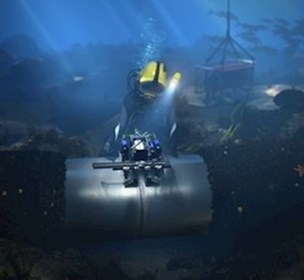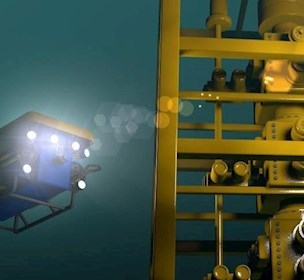Extending the lifespan of subsea infrastructure in Southeast Asia
Advanced non-destructive testing (ANDT) is key in Southeast Asia’s offshore asset management, enhancing safety and operational efficiency while reducing maintenance costs and extending asset lifespan.
Advanced non-destructive testing in Southeast Asia
Advanced non-destructive testing (ANDT) is transforming offshore asset management, especially in a region like Southeast Asia, where a robust approach to addressing the problems caused by challenging marine conditions and ageing assets can improve safety and reduce operational costs.
From weld crack detection to cathodic protection assessments, advanced inspection technologies are essential to prolonging asset life and mitigating the risks of catastrophic failures in the region.
Marine challenges and environmental factors
Southeast Asia has a unique combination of environmental factors: warmer waters, high salinity, and rapid marine growth all have to be considered, according to FORCE Technology AS’ Managing Director, Håkon Hallem.
“Tropical marine conditions bring challenges like marine growth, which makes inspection trickier and sometimes necessitates cleaning before hand, but this doesn’t deter us from using AUVs and advanced tools to deliver the accurate integrity data and resulting operational insight that our customers demand,” he said.
Our subsea technology significantly enhances inspection efficiency, accuracy and reliability, allowing us to detect defects early before they escalate into costly failures. Real-time data and analysis enable faster decision-making, ensuring timely repairs and proactive maintenance. Our software helps to define risk and operational longevity too, contributing to our ability to provide a complete integrity picture of an entire installation or even group of installations.Håkon Hallem / Managning Director, FORCE Technology Norway AS
Advanced inspection: leveraging the power of technology
A core element of FORCE Technology's approach to underwater inspection in Southeast Asia is the application of cutting-edge tools like the in-house developed P-Scan 5 for subsea corrosion detection and CorPos™ modelling software, which help maintain structural integrity by providing detailed data on potential issues—long before they become problems.
Håkon emphasized, “Our subsea technology significantly enhances inspection efficiency, accuracy and reliability, allowing us to detect defects early before they escalate into costly failures. Real-time data and analysis enable faster decision-making, ensuring timely repairs and proactive maintenance. Our software helps to define risk and operational longevity too, contributing to our ability to provide a complete integrity picture of an entire installation or even group of installations.”
A proactive approach is crucial when considering the cost dynamics of offshore operations. Offshore vessel time is one of the biggest cost drivers in any inspection or maintenance campaign. By deploying ROVs or AUVs with FORCE Technology’s advanced sensors and effective modelling techniques, the need for extensive vessel time is minimised.
Local partnerships optimise Southeast Asian underwater integrity
While advanced technologies are important, FORCE Technology’s strategy goes beyond technical capability. Strong local partnerships are key to operating efficiently in a diverse and challenging region. FORCE Technology’s collaboration with Turcomp, a local partner in Malaysia, is an example of this approach in action.
Håkon explained, “You cannot be wholly effective in Southeast Asia from Norway alone. You have to be on the ground with your own office, or you have to partner with someone locally. Turcomp has been crucial in getting us closer to clients across the region, ensuring that we can respond quickly without always sending engineers from Norway.”
As Skule Edvard Smørgrav, Vice President at FORCE Technology Norway AS notes, “Operationally, it's about having the right people and equipment at the right place and at the right time. this localization means that inspections can be carried out more swiftly, without long delays due to logistics, which is another critical advantage in the dynamic offshore industry.”
Skule also explained that local partnerships align with FORCE Technology's sustainability goals. “By establishing hubs locally and training local engineers, we’re minimizing the need to continuously fly people and equipment across the world, reducing emissions and making the whole operation more sustainable,” he said.
You have more questions when you have older facilities or assets, but we can give more answers. The safety uncertainties get bigger as assets age, so having precise inspection capabilities really adds value. However, unexpected things can happen to new infrastructure too.Håkon Hallem / Managning Director, FORCE Technology Norway AS
Operational efficiency and cost savings
The cost implications of advanced inspection technologies can sometimes be a hurdle for asset owners to overcome. However, as Håkon pointed out, “The initial investment in high-tech inspection services is outweighed by the substantial savings achieved over the asset's lifecycle.” The ability to pinpoint exact locations for maintenance, avoiding unnecessary interventions, and preventing unplanned shutdowns, all add up to significant cost reductions over time.
For older offshore assets, these technologies are even more beneficial. Ageing infrastructure tends to have more issues, ranging from modifications that have not been well-documented to the natural wear and tear associated with decades of exposure to harsh environments. Skule said that “A lot of installations in Southeast Asia were originally designed for 20-25 years. Now that these assets are approaching the end of their design life, we can help operators reassess their condition, implement targeted repairs, and potentially add another 5-10, even more years to their operational lifespan.”
Håkon added, “You have more questions when you have older facilities or assets, but we can give more answers. The safety uncertainties get bigger as assets age, so having precise inspection capabilities really adds value. However, unexpected things can happen to new infrastructure too.”
Skule illustrated this with a real-world example: “A few weeks ago, a client had an incident where an anchor hit a pipeline. They knew approximately where it happened but not the extent of the damage. We deployed our subsea inspection equipment and surveyed that section of the pipeline to assess the damage accurately. It shows how advanced tools can provide fast, reliable information, ensuring appropriate corrective measures.”
ANDT’s growth and challenges in Southeast Asia
Håkon attributes the growth of advanced inspection services in Southeast Asia, especially in Thailand and Malaysia, to an increasing focus on safety, production reliability, and environmental protection.
“More environmental concerns are emerging. Oil spills and other incidents receive significant global attention, pushing operators to adopt more rigorous inspection practices. This shift is creating opportunities for technologies that can help extend the safe operational life of installations, and at the same time help protect the fragile subsea environment, a need that is becoming more pronounced as the green transition is taking longer than expected.”
Interestingly, regional regulations have helped facilitate the adoption of FORCE Technology's solutions. Some Southeast Asian countries base their standards on well-established frameworks like NORSOK, which is common in the North Sea. Skule pointed out, “Being highly experienced with North Sea requirements means we’re well-positioned to meet Southeast Asia's standards too, especially since Malaysia and some other countries have adopted similar regulatory frameworks.”
Southeast Asia presents both unique challenges and opportunities for subsea inspection, and FORCE Technology is at the forefront of meeting these needs through a combination of advanced inspection tools, local partnerships, and a deep understanding of the region's dynamics. The focus on proactive maintenance, operational efficiency, and sustainability reflects a modern approach to managing offshore assets – one that not only aims to protect infrastructure but also seeks to create a more resilient and sustainable offshore industry for the region.
Related content

Improving subsea asset health with FiGS®
/Article

Pipeline integrity solutions for Southeast Asia
/Article
Advanced technology and inspection services ensuring safe and reliable pipelines in Southeast Asia.

Ensuring safe offshore pipeline operations in Thailand
/Article
Advanced subsea inspection technology to prevent pipeline spills and protect Thailand’s environment.

Subsea integrity management
/Service
Tying it all together, we offer integrity management of all your subsea assets.

